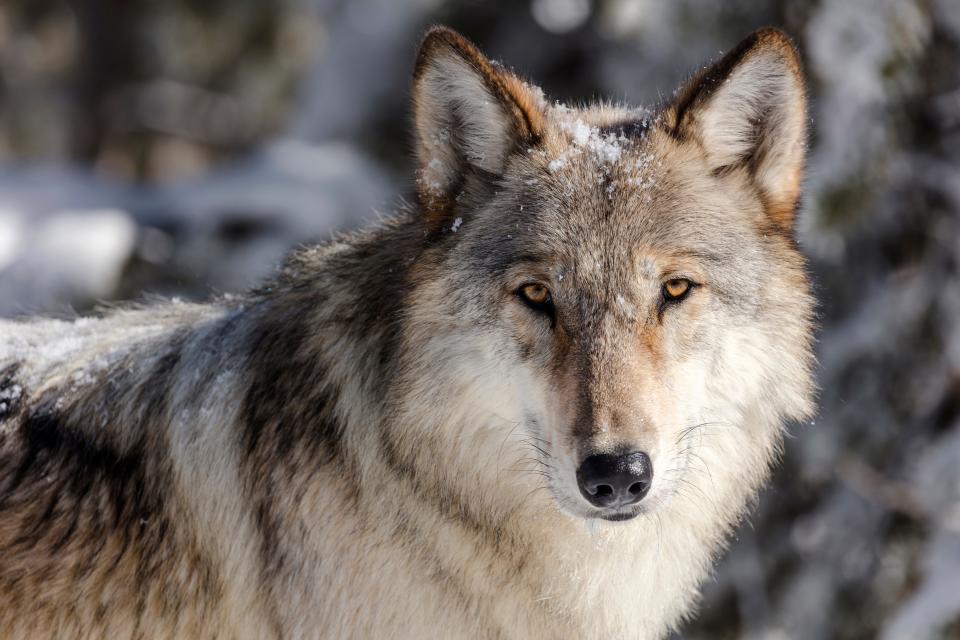Debate: Gray wolves introduced to new habitat and the impact on elk populations
There have always been problems whenever any species of wildlife with a good population in one area is “transplanted” into another area with good habitat but none of that species is present.
It doesn’t really matter what species is being transferred, from deer to turkeys to elk to Canada geese to moose, there always seems to be lots of people on both sides of the transfer issue with strong feelings either for or against the animals coming in. The anti-hunters don’t want the species of wildlife brought into an area because those animals will eventually be hunted. And hunters want exactly the opposite.
When it comes to introducing predators into an area where they once were but are no longer a part of that ecosystem the emotions run even higher. Fortunately, many predators and omnivores are slowly “self-repopulating” many areas as mature animals occupy prime habitat and younger animals, especially males, are being forced out to find secondary areas with adequate food supplies and enough females to keep their hormones in check.
With respect to New York, this situation is most obvious with the slowly spreading population of black bears. To my knowledge there has not been any “trap and transfer” efforts with this species, but the population of black bears has slowly progressed into the western portion of NY.

They have entered in naturally from the Adirondacks, the Catskills, and from the northern and western portions of Pennsylvania. The excess bears had to go somewhere, and some of them came here. According to DEC biologists, they are now thriving from the Finger Lakes to Lake Erie.
Which brings us to Colorado. There has been a relatively new effort to reintroduce gray wolves (also called timber wolves) into this state, bringing many of them in from Canada. But what might seem like a good idea to some people is a terrible waste of time, money and already existing big game species to others.
This is exactly what happened in several other states. Montana, Idaho and Washington state have all faced this “problem” within their own states.

I predict that in the relatively near future, Colorado will be experiencing a peck of trouble. The problem revolves around a proposed plan to reintroduce gray wolves into that state.
The animal rights people have made the proposal, and apparently the governor of the state supports the idea. But sportsmen, already knowledgeable about trap and transfer experiences in other states such as Idaho and Montana, are dead set against any such program in the “Centennial State.”
It is already a proven fact that, where wolves in have been reintroduced, the population of every big game species from mule deer to elk and moose has been reduced. Idaho had what was probably the highest elk population in America per square miles of habitat.
Lisenbee: By land and by water, outdoor dummies are at it again
More: What's the greatest conservation success in U.S. history?
More: These critters could live near - or inside - your home but you might never see them
But wolves were introduced, and their population flourished. At the same time the elk herds diminished. If you go to that state today it is difficult to see any elk herds, but wolf howls can be heard at just about any hour of the day or night.
Yellowstone National Park is another excellent example of wolf mismanagement. The Park brought in a total of 31 wolves in an attempt to manage both bison and elk. The “buffalo” immediately reverted to an ancient defensive tactic of circular defense, and fended off the wolves for the most part.
Only those buffalo that strayed from the herd (most often done by birthing cows) were in real jeopardy. Calf numbers fell as did cows, but the herd did not suffer too great a loss.
Elk populations did not fare as well. The overall population began a downward spiral. That situation increased in its downward trend as the wolf population increased.
Today, many visitors to the park are disappointed as they look for elk in the spacious meadows and see very few. The primary remaining herds are high in the mountains during the summer months and rarely visible to those tourists that cannot climb up to see them.
Now it is apparent that Colorado has begun traveling down the same path as Montana, Wyoming and Idaho. At a time when those three states are striving to reduce their populations of wolves, here are just a few facts to keep in mind.
When the first 31 wolves were released in Yellowstone in 1990, there was a stable herd of 20,000 elk wintering in the Jackson Hole area. That herd now varies between 4,000 and 6,000 animals. And, the elk population in the Idaho Lolo Wilderness Area prior to their wolf transplant in 1995 was estimated at 16,000. As for the most recent count, the herd was down to 1,000 or less.
There is one absolute truth that everyone who likes wolves must understand. No species of alpha predator, which the wolf certainly is, can remain completely unchecked. Either these critters will kill all of their preferred prey species and will switch to other prey or they will move to other distant areas in search of that game which they prefer. Or, they will starve.
The only other option is for the predators to be physically removed. And like it or not, the only economically feasible method is by sport hunting.
Game departments simply do not have the monetary resources to hire professional hunters for this difficult task. Sport hunters pay their own way for the privilege of hunting any of the big game species, and wolves definitely fall into that category. Several states already have wolf seasons.
Colorado has the largest elk herd in North America and releasing 250 wolves after what has happened in other states seems to me to be the height of game management stupidity. Colorado residents will be thrilled with videos of wolves being released into their beautiful mountains.
And it remains a mystery, if not a foregone conclusion, as to what will happen when the wolves begin to howl. Based on recent history, if you’re planning a future Colorado big-game elk hunt you’d better do it in the very near future.
Crossbow concealed
How about one really dumb outdoor/indoor crook story?
Every sane person knows that theft is a major issue for any retailer. That said, most archery shop owners are certainly more concerned with losing smaller items such as releases, sights and short stabilizers than they are with larger items like compound bows and crossbows.
In store surveillance video from earlier this year, the people watching can see our bad guy using a crutch as a cover as he steals from a True Value hardware store in Mims, Florida. Surveillance video first captured him taking cutting pliers off the shelf. Then he uses that tool to cut the zip ties off a Ravin crossbow. Then in another video he actually stuffs the compact crossbow into his sweatpants and leaves the store without being caught.
It’s clear that he doesn’t need the crutch for walking; he knows it will help “sell” the limp he’ll obviously have after sliding a crossbow in this sweatpants. His full-zip jacket also helps conceal the bow. Needless to say, local police recognized the man from the very clear video. They caught up with him, and he still had that crossbow inside his pants.
Brevard County Sheriff Wayne Ivey wrote on Facebook: “Just when you think you’ve seen it all, this guy takes carrying a concealed weapon to a whole new level.”
Len Lisenbee is the Messenger’s Outdoor Columnist. Contact him at lisenbee@frontiernet.net
This article originally appeared on Rochester Democrat and Chronicle: Introducing gray wolves in Colorado could wipe out elk population

